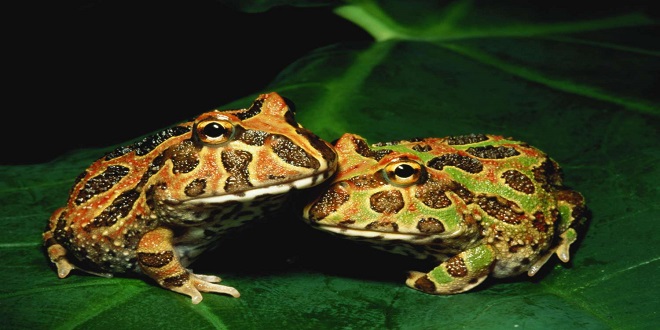How to raise a Horned Frog for a pet?

The horned Frog is a popular small reptile to keep as a pet. Many players keep several of these small reptiles because they are so affordable. Many players have dozens or more. Hormoned frog breeding can also be very easy and is not difficult. Many people enjoy keeping horned Frogs as pets.
Reptile Habits for the Horned Frog
Amphibians include the horned Frog. Amphibian refers to the fact that the horned Frog requires water and land for its existence. The larvae and tadpoles must be able to survive in water. Adults need to live in humid areas near water. This way of living is created during the biological evolution horned-frogs. Horned Frogs are a transitional species formed during the evolution of water life to land life.
The larvae of the Horned Frog live in water. However, the adults can adapt to life on the land. They have carp respiration, lung and skin respiration and lose their tails. Amphibious water is fresh water that can survive in saltwater. Horned frogs are not suitable for direct sunlight, dry, or anhydrous environments. To avoid predators and scorching sunlight, most horned Frogs are active at night. They hide under cover during the day.
Food
Horned Frogs can eat a variety of foods, including insects, small fish and mice. As long as they are able to swallow them, however, they will eat any food that is available. The horned Frog is greedy and will eat anything that’s offered to him. Young frogs should be fed every three to four days. The amount they are given should not exceed the recommended daily allowance. Adult frogs may be fed once per week but must be fed. The best food for horned frogs is approximately 2/3 of their body length. A single, large individual is better than multiple small ones, as in a 6 cm horned Frog. Additionally, a 4 cm fish is more nutritious than four 1 cm fish.
Temperature and Water
Use 2.1 Chlorine-free, filtered, or spring water. You can dechlorinate tap water by using chemical methods. This involves boiling the water or leaving it in an unclosed container for a night. Because amphibians don’t drink water but rely on their skin for water absorption, provide ample water basin so that the frog can easily move in and out.
2.2 Keep the water topped up regularly. It should be changed approximately every three to five working days in summer. In winter, it can be changed as often as once a week. It should be removed immediately if there are any excrement or dirt. Because horned Frogs live on the ground, directly soaking in water can be dangerous for their health. Water basins are better than direct immersion.
Horned Frogs’ Rearing Temperature
26-29 degrees is the ideal temperature for horned Frogs. This is the temperature at which the horned frogs can digest food or survive. It is possible to wonder why the express won’t hang at 5 degrees or less. Although this temperature is not able to digest food, it won’t be a problem in the short-term. Horned Frogs are cold-blooded animals and require the right temperature to digest food.
- Humidity in Horned Frog Rearing
Reproduction humidity for horned Frogs ranges from 60% to 80%. However, the humidity requirement is still high. There are several ways to increase humidity. It is important to remember that humidity can be increased by cleaning the mat material regularly.
Choice of Breeding Tank:
- A suitable size tank is essential.You need enough space to allow for movement of horned frogs. REPTIZOO is a top-selling brand for frog terrariums.
- Coconut brick can be used to condense the excrement, moss, and other materials of the horned Frog. It can also provide a hiding place and water retention. The horned Frog Mud can absorb water from the bottom of the box and fix it there, effectively stopping the substrate being brought into the water source.
- Drinking basins and climbing objects such as vines, bark backgrounds, and other natural elements create an ecological environment that is suitable for horned Frogs.
- The horned Frog is provided with the right temperature and humidity environment by using hygrometers, thermometers, and day- and nightlights.
